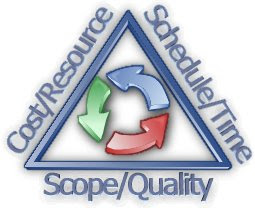Program Management: Program management is the centralized management of all the projects within a program with the purpose of achieving the program objectives.
Program Manager: The program manager is an individual that manages a program. They also manages multiple project managers each assigned to an individual projects within the program. The main purpose of program is to benefit from managing projects together rather than individually.
The reasons to group projects:
- Common Resources required among projects
- Sub Projects of the same project
- Dependency on one another
- Repetitive multiple projects within the program, etc.
The benefits:
- Improved Management
- Higher Chance of Success
- Cost Saving
The program management is very big subject and I will post more in my coming posts. That's the reason PMI has introduces a special certification for Program Management by name Program Management Professional Certification (PgMP).



